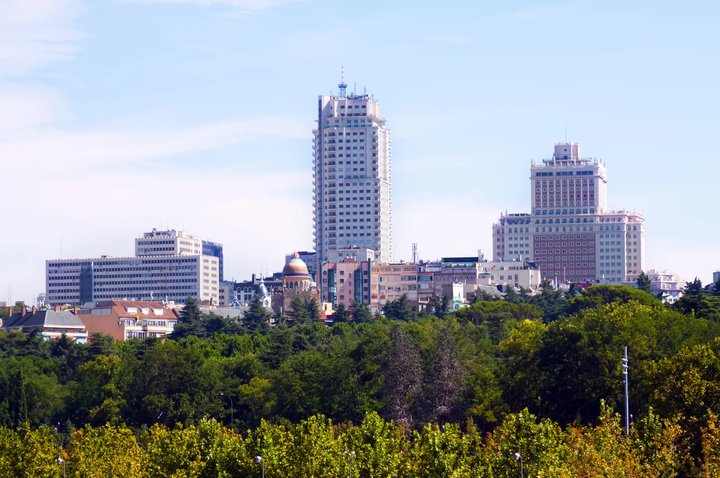The conversion of obsolete or underused buildings is emerging as a response to challenges such as land scarcity and housing demand, as well as the search for a more sustainable building stock. This trend has led to the transformation of these buildings into more competitive assets, revitalising the areas in which they are located. In this context, CBRE has introduced its Multistrategy initiative, which focuses on changing the use of buildings to optimise their performance.
According to CBRE data, over the last decade, they have recorded more than 150 changes of use, with a significant increase since 2019. Most of these changes have taken place in Madrid and Barcelona. Of these, 80% have been redirected towards two main categories: housing (54%) and hotels (25%). In terms of area, around 220,000 square metres have been converted from offices to residential, and 164,000 square metres from offices to hotels.
The CBRE study shows that in Madrid there are 308 office buildings classified as "Grade C" or lower quality, covering around 1.5 million square metres distributed in different submarkets. Specifically, within the M-30 area, there are 185 buildings in this category that are not in timeshare, totalling close to 800,000 square metres. The areas comprising the majority of this surface area are Barrio Salamanca, Chamberí, Chamartín, Tetuán, Centro and Arganzuela.
The report also highlights a notable polarisation between different asset types and locations. Buildings that meet high quality standards tend to have higher rents and occupancies. For example, in Madrid, grade A buildings have an availability rate of only 2.3%, while the average availability in the city is 11.7%.
The drive of administrations, key to the new life of a building
"The low availability rates in the highest quality buildings reflect the interest of companies to locate in the best buildings. It is in the most obsolete buildings with high availability rates that we see an opportunity for conversion to other uses. However, this is a complex and rigorous process that poses urban planning and regulatory restrictions, architectural challenges or the technical complexity of the project itself, and which requires a case-by-case analysis. It is essential that the administrations provide impetus from the regulatory point of view, allowing the flexibility of uses", says María Mayoral, Senior Director Investment Properties in Spain at CBRE, who adds that "a correction in prices is still necessary to make the transformation to a new use viable".
The flexibility in the regulation of uses by the Public Administrations is essential. According to CBRE, in Madrid alone, 200 million euros have been invested in the acquisition of properties for conversion. An example of this is the acquisition of an office property in Tres Cantos by Dazia and Aermont, with the aim of transforming it into Flex Living, with the advice of CBRE.
In 2023, in Madrid alone, 200 million have been invested in the purchase of assets to be transformed for change of use.
According to CBRE's forecasts, the trend of building transformation will continue to rise, but it is necessary to count on the impulse of the Public Administrations in the flexibilisation of uses. Currently, CBRE is working on more than 200,000 square metres of surface area in Madrid for their potential change of use, accompanying owners and investors in this transformation.
"Public-private collaboration is necessary to promote these initiatives that seek to give a second life to buildings and activate environments that may be stagnant. Conversion in certain areas and in certain cases may be the best alternative in an increasingly polarised market in which buildings that do not aspire to the highest standards of quality lose prominence in favour of those that meet occupants' demands for quality, technology, flexibility and ESG," stresses María Mayoral.
Revitalising assets and areas: boosting mixed uses
The CBRE report argues that changes in use not only have a direct impact on real estate, making it more competitive, but also on the revitalisation of areas and thus cities, making them more attractive to attract talent and investment. "The combination of uses results in cities that are more responsive to the needs of citizens. Therefore, the conversion of buildings is part of the transformation of neighbourhoods as a whole into better integrated mixed-use areas. A more flexible regulation would allow the activation of many areas that are losing dynamism", emphasises Mayoral.

